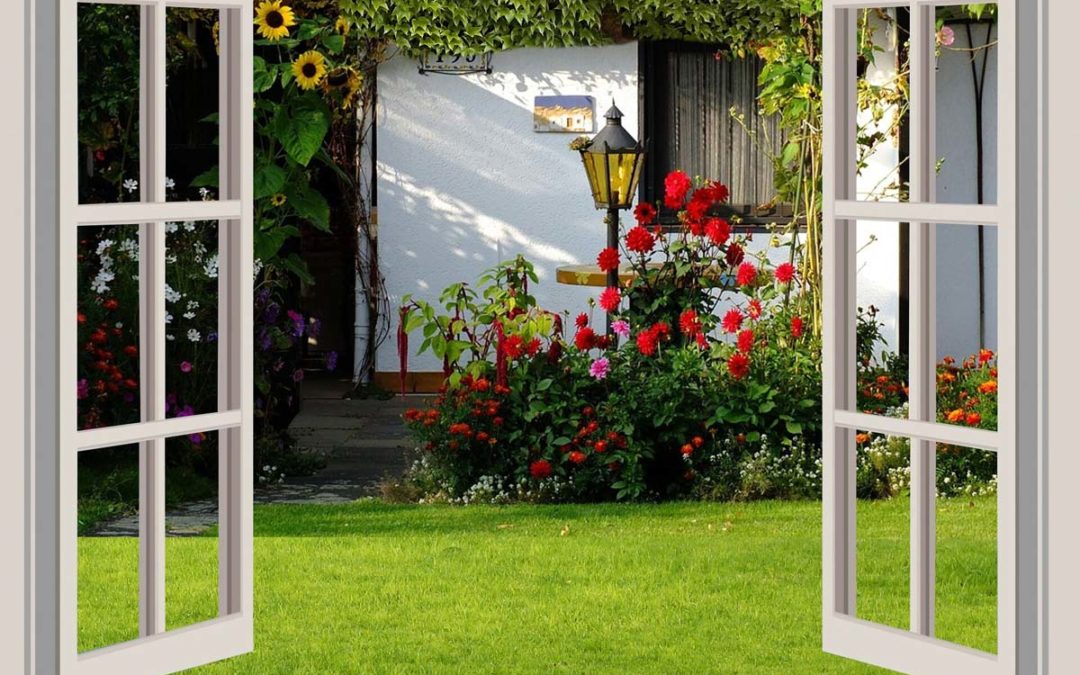Buyers and sellers want a property that offers the most bang for their buck. Of course, many factors go into determining a home’s value – location, neighborhood, schools, safety, floorplan and whether it has been updated, to name a few. There’s another important feature that is sometimes overlooked – the family yard.
Beyond Beautiful
Outdoor spaces are increasingly becoming an extension of the home. A recent study conducted by the Outdoor Power Equipment Institute (OPEI) indicates the majority of Americans (nine out of 10) says it’s important to have a landscape at their home. According to study results, the majority of Americans have a yard comprised of grass (86%), trees/bushes/shrubs (80%), pavers/cement/bricks/patio (51%) and landscaping rocks/gravel (see more about the study here).
Here are the top four ways family yards and other living landscapes add value to a property and extend the usefulness of a home for your buyers.
- Curb Appeal
As you know, curb appeal is an important factor in determining overall property value. After all, the first impression on a home is made before buyers even walk through the door. Studies show that improving overall curb appeal, which includes a beautiful lawn and landscape any time of the year, can boost property values by as much as 17% (source: Texas Tech University). - Trees are Tops
Mature trees are often an indicator of an established neighborhood, which can be a positive for buyers looking for an older, classic home. But the value of trees goes beyond perception and preference and right into the pocketbook of your clients. According to the International Society of Arboriculture, each front yard tree adds 1% to a homeowner’s sale price, while large specimen trees can add as much as 10% to property values. - Saving Green with Green
Potential buyers often ask about the energy efficiency of a home, and it turns out that living landscapes impact the monthly electric bill. According to the Urban Forest Coalition, 100 million mature trees around U.S. residences save approximately $2 billion annually in energy costs. In fact, strategically placed trees can save up to 56% on annual air conditioning bills. In the wintertime, evergreens that block winter winds can save 3% on heating costs (source: U.S. Department of Agriculture, Forest Service). Cumulatively, eight average-sized front lawns can provide the cooling equivalent to air-conditioning for 18 homes (source: Alliance for Water Efficiency). There’s even a National Tree Benefit Calculator (TreeBenefits.com/calculator/) your clients can use to estimate the economic and environmental value their trees provide on an annual basis. - Expanding Living Space
During warmer weather months, yards become outdoor family rooms and are increasingly important to families who want a safe, inviting place for their kids and pets to play almost year-round. Merging indoor and outdoor environments to increase living space is trending, making outdoor living space important for home buyers.
But just how much can a seller expect to recover from ensuring a useful outdoor living area? According to the National Association of REALTORS® (NAR) 2018 Remodeling Impact: Outdoor Features study, any cost to enhance outdoor living is well worth it. An overall landscape upgrade (installing flowering shrubs and trees and mulching with landscaping bark) will recover 83% of the project cost. Standard lawn care service (something 55% of REALTORS® have suggested to sellers) will recover 267% of its cost. Tree care, including trimming and pruning, will result in 100% value recovered from the project. For adding a wood deck, sellers can expect to recoup 80% of the project cost while a new patio offers a 69% return.
Curb appeal is just one way that living landscapes are beyond beautiful. A systematic research review concluded that knowing and experiencing nature – which starts in our own backyards – makes people generally happier and healthier. Children’s stress levels fall within minutes of seeing green spaces (American Journal of Public Health) and kids with more exposure to the outdoors perform better on cognitive testing (Proceedings of the National Academy of Sciences). People moving to greener areas experienced an immediate improvement in mental health that was sustained for at least three years (Science Daily).
Living landscapes also provide environmental benefits – important for the growing number of buyers (56% according to NAR’s REALTORS® & Sustainability study) who are looking for “green” homes. Family yards, trees and landscaping features filter and capture runoff, reduce heat island effects, improve air quality, sequester carbon dioxide, control soil erosion and support biodiversity.
All of this is priceless, whether your client is looking for a new place to call home or is just settling into their new property.

